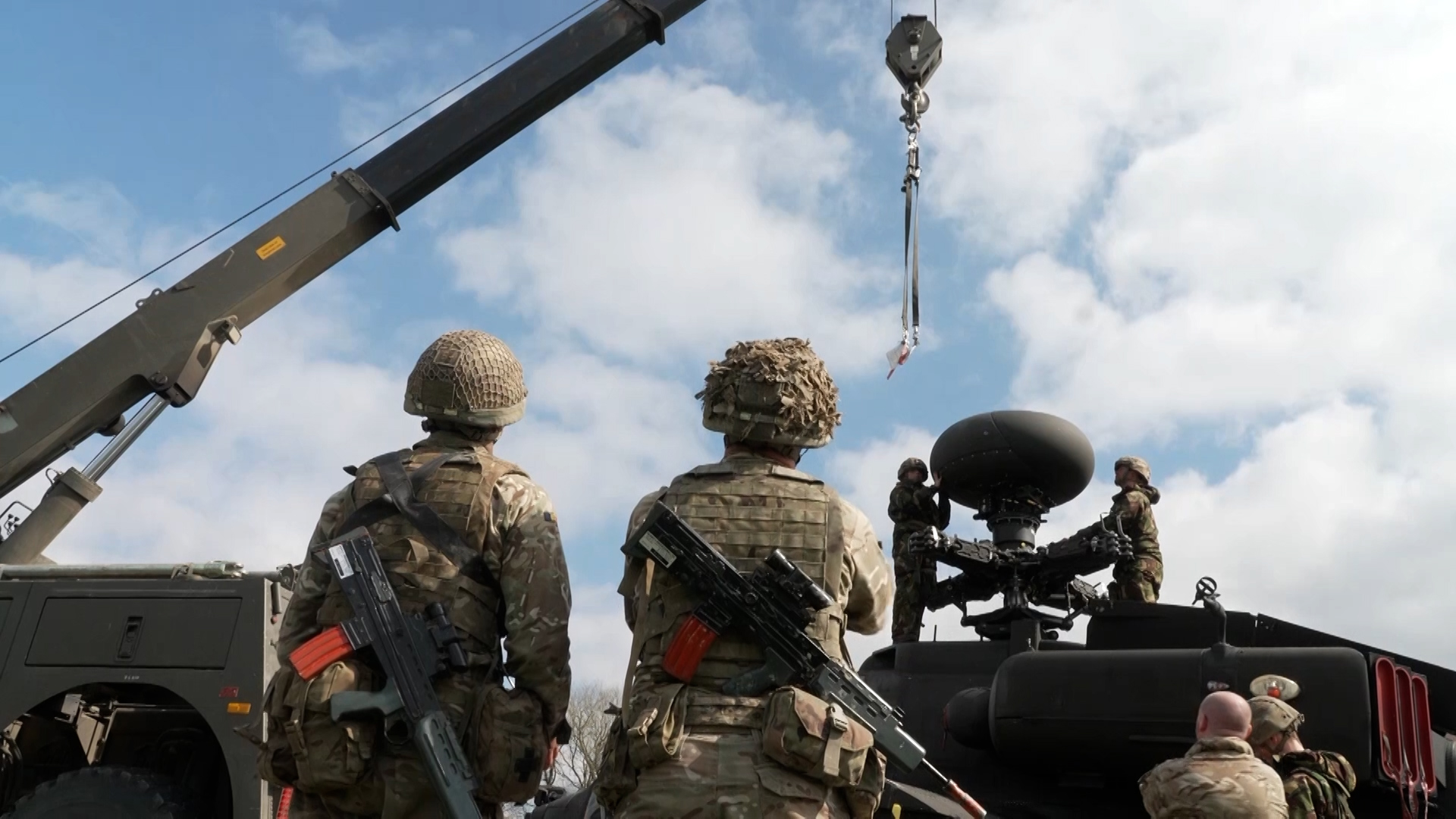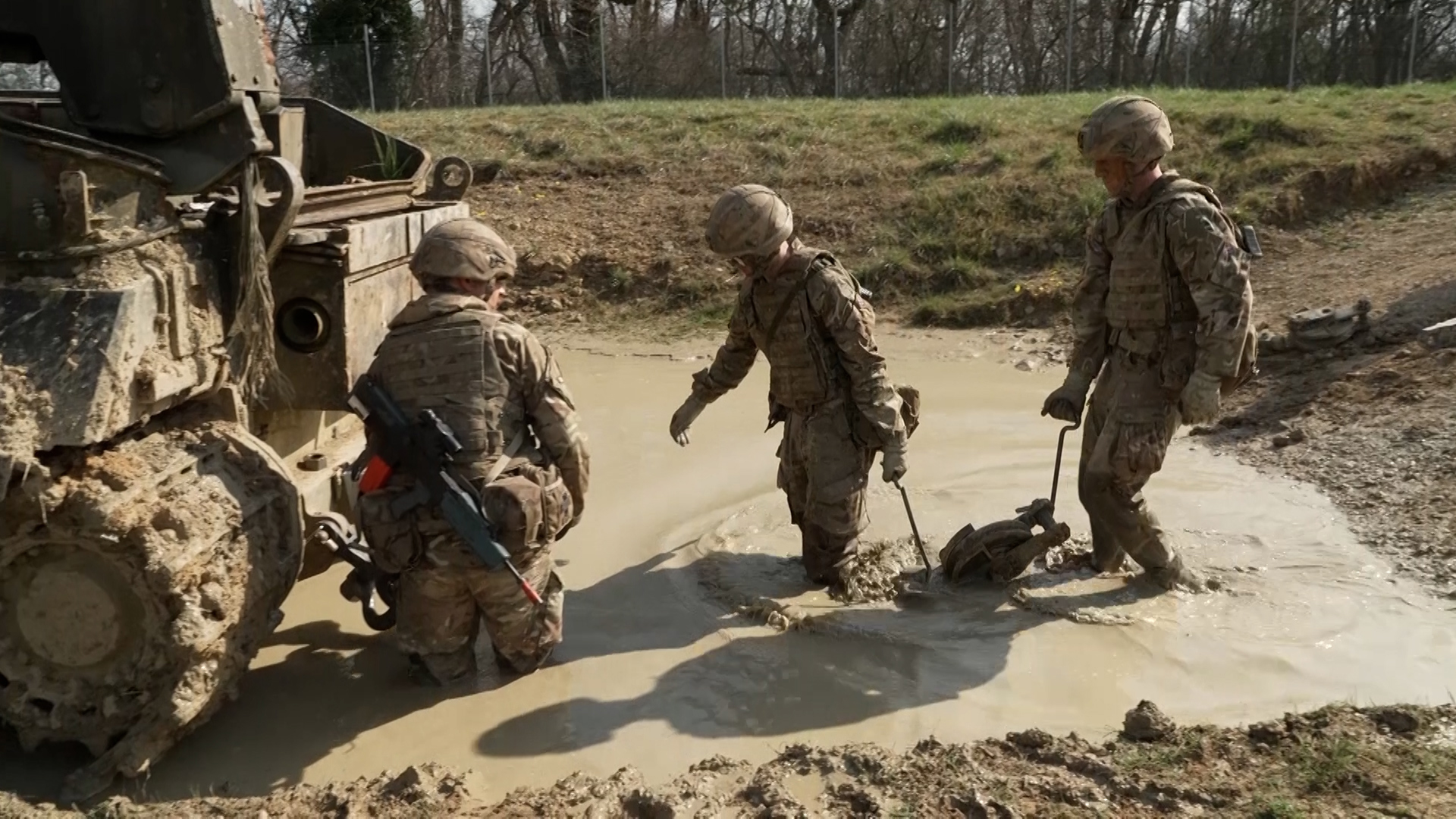Fixing it on the frontline: How engineers make an Apache airworthy again
Trainee military engineers have been on exercise attempting to remove a £4m Apache radar to learn how to fix it.
Recovery is part of this contextualised training and in the real world they'd have to race to the field even if threats were close by.
So the instructors go out of their way to simulate that – with a gas attack – giving trainees seconds to protect themselves before continuing their work.
Staff Sergeant Nathan Hamer from the School of Army Aeronautical Engineering explained how such an attack was simulated during the training exercise.
He said: "We had low-level flying aircraft. One of the civilian instructors at the school has his own gyrocopter.
"Every exercise, he gets to have the opportunity to go out on his gyrocopter and simulate a gas attack.
"So a bit of fun for him and then a bit of realism for our training."

Wearing protective gear is essential in such a scenario, but makes the work much harder.
"So they had to don their CBRN [chemical, biological, radiological, nuclear] respirators and essentially do that maintenance in full CBRN kit, which could happen in future combat zones," explained SSgt Hamer.
"That comes with its own problems, because when they have the respirators on, they've got limited vision.
"So you've got limited vision putting on a large, replaceable unit that is essentially [worth] £4m.
"If the enemy's on our doorstep, we could request further air support to maybe subdue the enemies.
"We'll have some all-round defence so we can fit this [the repaired or replaced radar]."

The exercise took place at MOD Lyneham, where the Defence College of Technical Training prepares tri-service personnel so they can overcome or overturn sticky situations for their future units.
The next scenario the trainees had to face was freeing an armoured recovery vehicle that had got bogged down in a waterlogged crater.
The vehicle needed to be winched out, but this additional resistance increased the strain from 60 to 80 tonnes.
Two winch wagons were required to pull it out – and a lot of manpower.
Craftsman Teejay Edwards-Johnson, of 8 Training Battalion REME, said the job should take less than two hours.
"It just depends on how many crew there are and how hard we're grafting," he said.
"And obviously the other restraints we have to include in our plan, such as rolling resistance, ground resistance, damage, degree of slope, stuff like that.
"This all comes into a big plan we do. And that gives us a rough idea of what kit we need and how we're going to do this."

Difficulties to overcome include the weight of the equipment and the physical conditions.
"The kit we use is quite heavy, obviously," said Craftsman Edwards-Johnson. "Other than that the casualty vehicle's in the water as well – and then we'll be working in water.
"So we're like knee-deep, sometimes thigh-deep in water while getting kit attached."
Eight weeks prior to this exercise, the trainees would have never touched a recovery vehicle.
Very soon, the recovery mechanics will be able to respond rapidly to rescue and mobilise platforms across the British Army and those who use them, getting their colleagues out of the mud no matter the odds.









